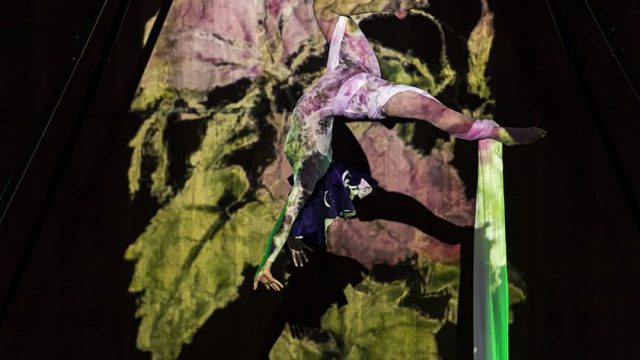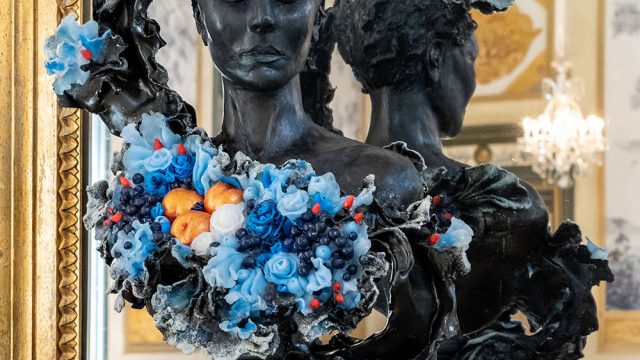The Making of ‘Order’ installation. Working in an institution such as the V&A and more often than not with an historical collection, it is easy to forget that art objects are made by people and are the product of quite specific agendas and ideas, desires and limitations. It is therefore such a pleasure and a privilege when you get to work closely with living artists and get to discuss, deliberate and interrogate the factors that contribute to their practice. The pleasure is increased ten fold when it is an artist such as Sue Lawty who is so open to eccentric and erratic discussion, and so willing and generous with the organic growth of her work. These two elements were crucial to my three weeks working with her. Despite the volume of work and an imminent deadline, Sue was always willing to discuss whatever came up. Whilst conversation often started with the small stones inches from our faces, it readily grew upwards and outwards, solving the world’s problems along the way and occasionally even returning to the task in hand. And this openness was even more apparent when talking to any enquiring member of the public. Sue never once cut a conversation short or refused any question, from the simplest to the most convoluted. However, it was Sue’s fluid approach to the physical production of the work that impressed me most. The movement and rhythm of the piece is created by the careful choice and placement of each stone ‐ each one relative to the previous and the following stone, both vertically and horizontally. These decisions are small, even insignificant in some ways; one stone can quickly disappear in amongst the mass. But, it is the sum of these tiny decisions that creates the feeling of the work, its pauses and its texture. Whilst Sue decided upon the colours and sizes of the stones, and at which stage we would aim to create a block or a break in density, the nature of working with a changing selection of technicians meant that the work picked up a second, less deliberate flow of its own. It became the product of different eyes and sensibilities. It would be easy to say that it is an implicit part of having many people working on a single piece. However, this ‘inevitability’ is only so because of Sue’s lack of ego and the eagerness with which she was willing to allow the work to mature in its own way, always re-negotiating between the sketched plans and the ever-changing reality. It is always a great benefit to work with an artist on a piece over a period of time because you get to discuss not only the academic and art historical roots of their practice, but you also get to mull over the school holidays, the traumas of public transport, the effect of the weather, ‘Personal Bests’ in the marathon, family bereavement… And it is truly all these minute details that, like the piece itself, come together to form what the work is. To be one of the few people working with an artist on a piece gives you this unique view of the work and again reminds you how an art object’s ‘meaning’ constantly fluctuates, depending on the involvement and the level of initiation of the audience. Adam Lloyd Monaghan 





Guest Posting 2
0 comments so far, view or add yours
Please read our privacy policy to understand what we do with your data.


